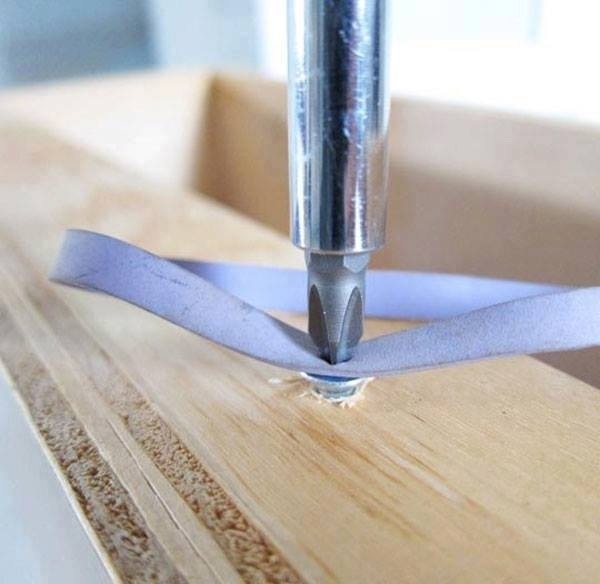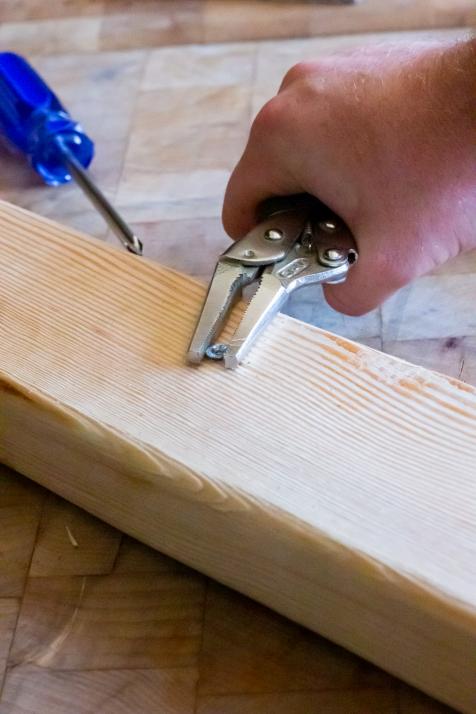Stripped screws can be a major headache for any DIY enthusiast or professional carpenter. It seems like no matter how carefully you try to tighten or loosen a screw, there’s always a chance of it getting stripped. The frustration is even greater when dealing with screws embedded in wood, as the traditional methods of removal may cause damage to the surrounding material. But fear not! In this guide, we will explore effective techniques and tools to help you confidently tackle the challenge of removing stripped screws from wood, without causing any further harm.
Whether you’re a seasoned woodworker or a novice DIY-er, learning how to remove a stripped screw from wood is an essential skill to have in your toolkit. Not only will it save you time and money by avoiding costly repairs or replacements, but it will also empower you to confidently take on future projects without the fear of being defeated by a stubborn screw. So, if you’re tired of struggling with stripped screws and are ready to take control of the situation, read on as we dive into the world of stripped screw removal and discover the techniques that will make this once-frustrating task a breeze.
How to Remove a Stripped Screw from Wood:
- Place a rubber band over the screwhead for better grip.
- Use a manual screwdriver with a larger size to get a better grip.
- If the screw is still stuck, try using pliers to turn it counterclockwise.
- If all else fails, use a screw extractor tool to remove the stripped screw.

How to Remove a Stripped Screw from Wood
Stripped screws can be a frustrating challenge when working with wood. Whether you’re a DIY enthusiast or a professional woodworker, encountering a stripped screw is not uncommon. However, with the right tools and techniques, you can easily remove a stripped screw from wood without causing any damage. In this guide, we will walk you through the step-by-step process of removing a stripped screw from wood, ensuring a smooth and efficient operation.
Step 1: Assess the Situation
Before attempting to remove a stripped screw, it’s essential to assess the situation. Determine the size and type of the screw head, as this will help you choose the appropriate method for removal. Common types of screw heads include Phillips, slotted, hex, or Torx. Additionally, consider the condition of the screw and the wood surrounding it. This information will guide you in selecting the right tools and techniques for extraction.
Next, gather the necessary tools for the job. You may need a screwdriver or power drill with a compatible screwdriver bit, pliers or locking pliers, a rubber band or a piece of steel wool, and a hammer. Having these tools readily available will save time during the removal process.
Step 2: Use a Rubber Band or Steel Wool
If the screw head is partially stripped, one effective method is to use a rubber band or a piece of steel wool to provide additional grip. Place the rubber band or steel wool over the stripped screw head, ensuring it covers the entire surface. Then, insert the screwdriver or power drill bit into the screw head and apply steady pressure while turning counterclockwise. The added friction from the rubber band or steel wool will help the tool grip the screw head, allowing you to remove it more easily.
If the screw head is completely stripped, you can try using pliers or locking pliers instead. Place the jaws of the pliers around the screw head and apply firm pressure while turning counterclockwise. Be careful not to damage the surrounding wood while exerting force. If the screw still won’t budge, proceed to the next step.
Step 3: Create a Groove
If the previous methods haven’t worked, creating a groove on the stripped screw head can provide an alternative solution. Using a power drill with a small drill bit, carefully drill a hole directly into the center of the screw head. Ensure the drill bit is smaller than the width of the screw head but larger than the screw’s shaft. This will create a groove that allows you to gain traction and remove the screw.
Once the groove is created, insert a screw extractor into the hole. A screw extractor is a specialized tool designed to bite into the screw and turn it counterclockwise. Apply steady pressure while turning the extractor using a wrench or a pair of pliers. The extractor will grip the screw, allowing you to remove it from the wood. If necessary, tap the extractor gently with a hammer to secure its grip on the screw.
Step 4: Additional Methods
If all else fails, there are a few additional methods you can try. For instance, you can use heat to expand the metal around the screw, making it easier to remove. Alternatively, you can use a rotary tool with a cutting disc to create a small notch in the screw head, allowing you to use a flathead screwdriver for extraction.
Remember to exercise caution when using these methods, as they may carry some risk of damage to the wood or injury to yourself. If you’re unsure or uncomfortable, it’s advisable to seek professional assistance.
Step 5: Prevention for the Future
To avoid encountering stripped screws in the future, there are a few preventive measures you can take. Firstly, ensure you’re using the correct screwdriver or drill bit size for the screw head. Using the wrong size can easily strip the screw. Additionally, apply firm pressure and maintain a steady hand while turning the screwdriver or drill to reduce the risk of stripping. Lastly, consider using lubricants like WD-40 or soap on stubborn screws to ease their removal.
By following these steps and preventive measures, you can effectively remove stripped screws from wood without causing any further damage. Remember to take your time, use the appropriate tools and techniques, and exercise patience during the process. With practice, you’ll become proficient in handling stripped screws and achieve successful removal every time.
Frequently Asked Questions
Here are some commonly asked questions about how to remove a stripped screw from wood:
Question 1: What is a stripped screw?
A stripped screw is a screw that has lost its grip in the wood, making it difficult to remove. This usually happens when the screwdriver or drill slips while applying force, causing the screw head to become worn or damaged.
Stripped screws can be frustrating to deal with, but there are several techniques you can try to remove them from wood surfaces.
Question 2: What tools do I need to remove a stripped screw?
There are a few tools you can use to remove a stripped screw from wood. One option is to use a screw extractor, which is a specialized tool designed to grip onto the stripped screw and turn it counterclockwise. Another option is to use pliers or locking pliers to grip the screw head and turn it out. You can also try using a rubber band or a piece of steel wool to increase the grip on the screw head.
It’s a good idea to have a variety of tools on hand so you can try different methods and see which one works best for your situation.
Question 3: How do I use a screw extractor?
To use a screw extractor, you’ll need to first drill a small hole into the center of the stripped screw head using a drill bit that is slightly smaller than the screw extractor. Then, insert the screw extractor into the hole and turn it counterclockwise using a wrench or pliers. The screw extractor will grip onto the stripped screw and allow you to remove it from the wood.
It’s important to apply steady pressure and make sure the screw extractor is securely in place before attempting to turn it.
Question 4: What should I do if the screw is stuck and won’t budge?
If the screw is stuck and won’t budge, there are a few things you can try. First, you can try tapping the screw head lightly with a hammer to help loosen it. You can also try applying heat to the screw head using a hairdryer or heat gun, as the expansion from the heat may help to break the screw free. If all else fails, you may need to resort to drilling out the screw and filling the hole with a wood filler.
Remember to take your time and be patient when attempting to remove a stubborn screw.
Question 5: How can I prevent screws from stripping in the first place?
Preventing screws from stripping can save you a lot of headache down the line. One way to prevent stripping is to make sure you’re using the correct size and type of screw for the project. Using a screwdriver or drill with the appropriate torque settings can also help prevent excessive force that can lead to stripping.
Additionally, it’s important to maintain good grip and control while driving screws into wood. Applying even pressure and keeping the screwdriver or drill straight can help minimize the risk of stripping.

Remember, patience is key when dealing with stripped screws. It may take a few attempts before finding the right method that works for you. Additionally, it is always a good idea to have a set of alternative tools on hand, such as screw extractors or a drill, in case the initial methods do not yield the desired results. With perseverance and the right knowledge, you can confidently tackle any stripped screw situation and restore your wooden surfaces with ease.
- How to Remove Glue From Wood Floor - April 14, 2024
- How to Dissolve Wood Glue - April 14, 2024
- How to Remove Wood Glue - April 14, 2024